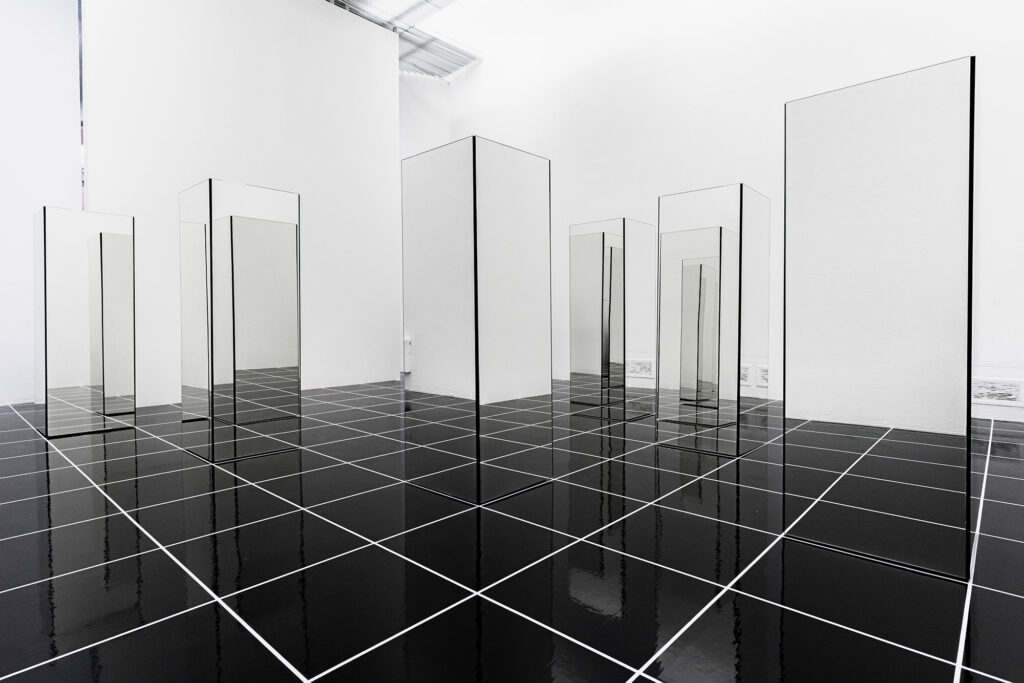Established as a conceptual and minimalist artist and performer on the New York art scene of the late 1960s, Adrian Piper raises often uncomfortable questions about politics, racial and gender identity; asking people to confront truths about themselves and the society in which they live. As a woman, artist and philosopher, Piper’s work often questions her experiences of sexism and misogyny. In this sense, her research has inspired entire generations of contemporary artists.

The Mythic Being: Sol’s Drawing # 3 by Adrian Piper, 1974, via Walker Art Center, Minneapolis
The Padiglione d’Arte Contemporanea in Milan presents the first European retrospective in over 20 years dedicated to Piper. The works on display highlight the analysis of the ‘visual pathology’ of racism: in a plethora of mixed media the artist carries out research on the image of African Americans brought about by society and many widespread stereotypes. This article recalls certain works present in the exhibit, providing a context for their interpretation.

Adrian Piper, Race Traitor, 2018
Piper’s first exhibited works date back to the 1960s. These drawings and figurative pictorial works were created at a young age, even prior to her arrival at the School of Visual Arts – SVA in New York. Despite the use of the term LSD in some titles, these psychedelic works were not produced under the influences of narcotic substances but are rather works that testify to the attempt to look beyond the surface of things. This is a practice that Piper pursued from the start of her career, also frequenting Vedic philosophical and spiritual readings, meditation and yoga. The intense concentration on the subject leads to the surfaces vibrating until they fragment, an instance explored in her work ‘LSD Self-Portrait from the Inside Out’ (1966).
After an embryonic pictorial-psychedelic phase, Piper approached conceptual art and began working in this direction between the 1970s and 80s. The artist shifted focus towards racial and gender discrimination, reflecting on the historical and cultural mechanisms leading to the creation of predefined societal identities. For instance, in her work ‘Close to Home’ (1987) she prompts the viewer with a series of questions, placed under photographs of African Americans on the topic of relationships of various kinds such as work-related, personal etc. The work instils the viewer with a sense of embarrassment with direct questions such as ‘Have you ever had a relationship with a black person?’ followed by: ‘If yes, were you drawn to this person because of his or her race?’. Piper presses a series of similar questions to the aforementioned, all of which encourage us to dig deep beyond our beliefs regarding the classification of our own identity and that of those surrounding us.
In 1991 the US press covered the case of Anita Hill, a young African-American lawyer who testified that she had been sexually harassed by Clarence Thomas, an African American nominated to the Supreme Court. The media debate misrepresented the victim as a seductress. This case was among the events that triggered the commencement of the third wave of feminism. The photograph of Hill at the age of 8, superimposed on a text in which Piper reports censorious comments, is a constant element in the ‘Decide Who You Are’ series (1992). It is a composition of panels, on the right there is an image of Hill, contrasted by an enlarged drawing of three monkeys and an amalgamation of texts regarding racism and sexism.
The 2000s marked a progressive alienation from American society for Piper, the academic environment in particular, providing an explanation for Piper’s ‘escape’ from the US to Berlin in 2005. She explains this decision in her book ‘Escape to Berlin: a Travel Memoir’. In addition, in 2012 the artist ‘retired from being black’, a controversial statement questioning the predetermined African-American identity that had been assigned to her on a social level.
